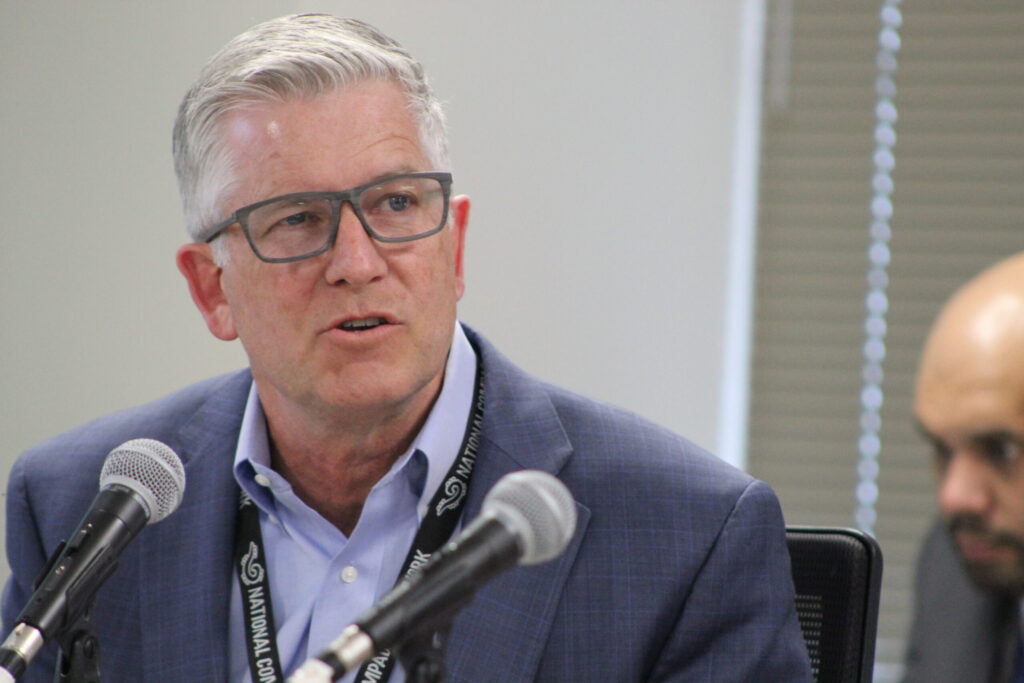Will state pols social-engineer Front Range neighborhoods? | LOEVY

Bob Loevy
People on the Front Range who live in homes with single-family zoning should be paying close attention to two bills currently under consideration in the Colorado state legislature at the State Capitol in Denver. One of those bills would, in effect, turn all single-family zones on the Front Range into two-family zones.
The other bill would encourage higher density development along major bus routes.
Warning: these two bills are under active consideration at the state legislature and their status may have changed in the time since this article was written.
HB24-1152 would allow Auxiliary Dwelling Units (ADUs) in all single-family zones on the Front Range (Pueblo through Colorado Springs and Denver to Greeley and Fort Collins). The law will not apply in ski-resort areas such as Aspen and Vail, which will be allowed to keep single-family zoning.
Stay up to speed: Sign up for daily opinion in your inbox Monday-Friday
An Auxiliary Dwelling Unit (ADU) can be added inside an existing single-family house or be built in the backyard as a separate freestanding home. In either case, the ADU can be either rented or sold to a second family, which will move in and live on the property next to the original owner.
The property, originally single-family, is now hosting two separate families rather than just one.
There is another way to go when ADUs are permitted in a single-family neighborhood. Investors will buy the property, tear down the single-family home, and build a larger and more modern two-family house, or duplex, in its place. When this occurs, the original single-family home will have been said to be “scraped off.”
Note when a single-family home is replaced on the same lot by a two-family home, the population density has doubled. At the same time, the number of automobiles driven in the neighborhood by the two families will typically double as well.
Supporters of ADUs in single-family neighborhoods believe more housing is needed at all price levels. In addition, some of the new homes constructed will qualify as affordable housing.
Others support densification in existing single-family neighborhoods because it will result in more efficient use of resources. New homes are added to the city without using raw land in expanding suburbs at the rim of the city. Also utilities such as water, wastewater, natural gas and electric power are close by and efficiently attached to the additional homes without making long and expensive extensions of utility lines.
Often, where ADUs are permitted, an older historic-looking single-family house will be torn down and replaced with a modern two-family structure. This has made ADUs very unpopular with historic preservation organizations in older cities.
In Colorado Springs, for instance, HB24-1152 is strongly opposed by people who live in older historic neighborhoods surrounding the downtown area. They seek to preserve the historic look, character, and quality of life in their neighborhood. Their main argument is new housing and affordable housing should be built in the community but not at the expense of altering existing neighborhoods.
In short, if you want to preserve your home’s single-family zoning and do not want it to become two-family zoning, then you should strongly oppose HB24-1152. Another legislative bill of interest to homeowners is HB 24-1313. It applies to any property in a Front Range city which is within one-quarter mile of a bus route where a bus runs every 15 minutes.
HB24-1313 creates a detailed process by which cities will evaluate population densities along major bus routes. If the process reveals the population densities are not high enough, remediation in the form of zoning changes will be required. The logic here is to increase the population along the bus route so there will be more potential riders for the buses.
A highly debated part of this law is that, in those cities that do not make the zoning changes required by Dec. 31, 2026, the cities’ share of the state Highway Users Tax Fund (HUTF) will be withheld by the state treasurer. Thus, cities will face a major financial penalty for not meeting the state legislature’s required population density levels on major bus routes.
There are many major bus routes in many cities on Colorado’s Front Range. Many of these bus routes are already lined with high-density uses such as high-rise apartment buildings and commercial establishments. There are many other bus routes, however, lined with single-family homes for many blocks that would be vastly changed by this legislation. In many cases, the older single-family homes lining the bus route are of historic significance.
Thus, if you live in a single-family home on a major bus route in a city on the Front Range and do not want to see your house and neighborhood radically changed, then you probably should oppose HB24-1313. Political scientists have a word for bills like HB24-1152 and HB24-1313. They are called “ripper bills,” because they “rip” control of city government issues such as ADUs and population densities along city bus routes and lodge those powers at the state level controlled by the state legislature.
Bob Loevy is a retired professor of political science at Colorado College. One of his teaching areas was state and local government.










